
The Athabasca River is a river in Alberta, Canada, which originates at the Columbia Icefield in Jasper National Park and flows more than 1,231 km (765 mi) before emptying into Lake Athabasca. Much of the land along its banks is protected in national and provincial parks, and the river is designated a Canadian Heritage River for its historical and cultural importance. The scenic Athabasca Falls is located about 30 km (19 mi) upstream from Jasper.
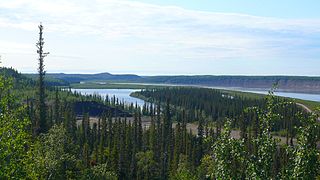
The Mackenzie River is a river in the Canadian boreal forest. It forms, along with the Slave, Peace, and Finlay, the longest river system in Canada, and includes the second largest drainage basin of any North American river after the Mississippi.

Great Slave Lake is the second-largest lake in the Northwest Territories of Canada, the deepest lake in North America at 614 m (2,014 ft), and the tenth-largest lake in the world by area. It is 469 km (291 mi) long and 20 to 203 km wide. It covers an area of 27,200 km2 (10,500 sq mi) in the southern part of the territory. Its given volume ranges from 1,070 km3 (260 cu mi) to 1,580 km3 (380 cu mi) and up to 2,088 km3 (501 cu mi) making it the 10th or 12th largest by volume.

Fort Smith is a town in the South Slave Region of the Northwest Territories (NWT), Canada. It is located in the southeastern portion of the Northwest Territories, on the Slave River and adjacent to the Alberta border along the 60th parallel north.

The Slave River is a Canadian river that flows from the confluence of the Rivière des Rochers and Peace River in northeastern Alberta and empties into Great Slave Lake in the Northwest Territories. The river's name is thought to derive from the name for the Slavey group of the Dene First Nations, Deh Gah Got'ine, in the Athabaskan language. The Chipewyan had displaced other native people from this region.
The Northern Life Museum is in Fort Smith, Northwest Territories, Canada. The museum has a collection of over 13,000 artifacts representing the peoples and history of the North. Many of the artifacts were collected by the Oblate Fathers and the Grey Nuns during their missionary work in the North.

The Mackenzie Northern Railway is a 602-mile (969 km) Canadian railway operating in Alberta and the Northwest Territories. It is the northernmost trackage of the contiguous North American railway network. Since being purchased by CN in 2006, the railway's mainline consists of the Slave Lake, Peace River, Manning, and the Meander River subdivisions.
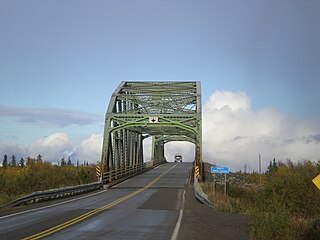
The Yellowknife Highway, officially Northwest Territories Highway 3 and also known as the Great Slave Highway, is a highway connecting Yellowknife, Northwest Territories, to the Mackenzie Highway, from a junction 188 km (117 mi) north of the Alberta border. First completed in 1960 as a gravel and dirt road, the highway is now paved and realigned after years of work concluded in 2006. Access to Yellowknife prior to the opening of the Yellowknife Highway was possible only by airplane, winter road, or boat across Great Slave Lake.

The Mackenzie River in Canada's Northwest Territories is a historic waterway, used for centuries by Indigenous peoples, specifically the Dene, as a travel and hunting corridor. Also known as the Deh Cho, it is part of a larger watershed that includes the Slave, Athabasca, and Peace rivers extending from northern Alberta. In the 1780s, Peter Pond, a trader with the North West Company became the first known European to visit this watershed and begin viable trade with the Athapascan-speaking Dene of these rivers. The Mackenzie River itself, the great waterway extending to the Arctic Ocean, was first put on European maps by Alexander Mackenzie in 1789, the Scottish trader who explored the river. The watershed thus became a vital part of the North American fur trade, and before the advent of the airplane or road networks, the river was the only communication link between northern trading posts and the south. Water travel increased in the late 19th century as traders, dominated primarily by the Hudson's Bay Company (HBC), looked to increase water services in the Mackenzie River District.

Marine Transportation Services (MTS) formerly Northern Transportation Company Limited (NTCL) is a marine transportation company operating primarily in the Mackenzie River watershed of the Northwest Territories and northern Alberta, and the Arctic Ocean using a fleet of diesel tug boats and shallow-draft barges. NTCL filed for bankruptcy in 2016 and its assets were acquired by the Government of the Northwest Territories later that year.
The Rae–Richardson Arctic expedition of 1848 was an early British effort to determine the fate of the lost Franklin Polar Expedition. Led overland by Sir John Richardson and John Rae, the party explored the accessible areas along Franklin's proposed route near the Mackenzie and Coppermine rivers. No contact with Franklin's party was achieved and Rae later interviewed the Inuit of the region, from whom he obtained credible accounts that the desperate remnants of Franklin's party had resorted to cannibalism. This revelation was so unpopular that Rae was shunned by the Admiralty and popular opinion; the search for Franklin continued for several years.
Waterways is a locality within the Regional Municipality of Wood Buffalo in northern Alberta, Canada. It is now a neighbourhood within the Fort McMurray urban service area along the west bank of the Clearwater River, south of the river's confluence with the Athabasca River.

The Radium Queen and her sister ship the Radium King were built in Sorel, Quebec in 1937, for the Northern Transportation Company, a subsidiary of Eldorado Gold Mines. The Radium Queen was a cargo/tug ship that served on the Slave River. It made runs between Lake Athabaska and Great Slave Lake which is generally navigable. The Radium Queen towed barges from the railhead at Waterways, Alberta to a portage around the rapids. Cargo was unloaded there and transported by land, and loaded on barges on the lower river that were towed by the Radium King, and later by other tugboats, like the Radium Charles, Radium Express and Radium Yellowknife.
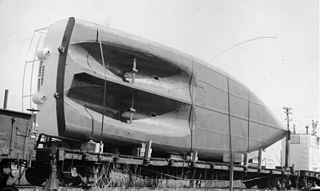
The Radium Express is a Russel Brothers tugboat operated by the Northern Transportation Company. The vessel was built in Owen Sound, Ontario, disassembled, and then shipped by rail to Waterways, Alberta, which was then the terminus of the North American railway grid.
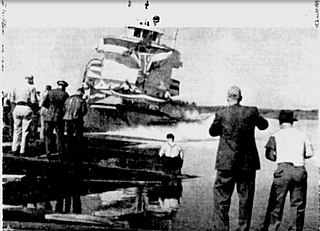
The Radium Yellowknife is a Canadian tugboat. Like other vessels built for service on the MacKenzie River, its tributaries, and Great Bear Lake and Great Slave Lake, she was first built in a shipyard in Vancouver, British Columbia, then disassembled and shipped by rail to Waterways, Alberta. There she was reassembled and launched into Clearwater River on August 18, 1948 - late in the season, as the rivers used to freeze in late September or early October. Her reassembly was delayed initially by floods in the Fraser valley in May hindering transport, and then by a derailment of several of the railway cars carrying her components. After launch, she sailed to the portage on the Slave River at Fort Smith, Northwest Territories and was dragged overland across the portage to the lower river, where she could then access the Great Slave Lake, the MacKenzie River, and the Beaufort Sea.

Aklavik was a small cargo vessel the Hudson's Bay Company used to carry supplies to, and furs from, its outposts in the high Arctic. She was active in the first half of the 20th century.

The Radium Cruiser was a Russel Brothers tugboat operated on the Mackenzie River system for the "Radium Line". She was constructed in Owen Sound, Ontario, in 1939, then disassembled and shipped by rail to Waterways, Alberta. Waterways is a river port, and was then the northern terminus of the North American railway grid. Waterways is on the Clearwater River, not far upstream from where the river empties into Lake Athabasca. The waters of Lake Athabasca flow into Great Slave Lake down the Slave River, and then down the Mackenzie River to the Arctic Ocean.

The Radium Gilbert was a tugboat built for transporting supplies to, and ore from, the radium and uranium mines in Canada's Northwest Territories. Like the other tugs in the Radium Line she was steel-hulled.
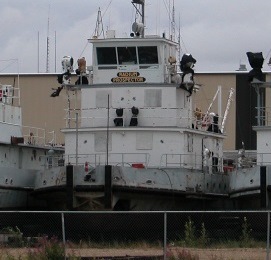
The Radium Prospector was a tugboat operated by the Northern Transportation Company's "Radium Line", on the tributaries of the Mackenzie River in Canada. She was launched in 1956. Many of her sister ships also included "Radium" in their name, hence the appellation "Radium line".

Radium Franklin was a tugboat built in 1951, and operated by the Northern Transportation Company - popularly known as the "Radium Line", because many of their tugboats contained Radium in their name, since they were originally built to haul Uranium ore from Port Radium, on Great Bear Lake. She was retired in 1979, after spending most of her career hauling barge packed with ore, and then briefly serving as a yard tug.

















